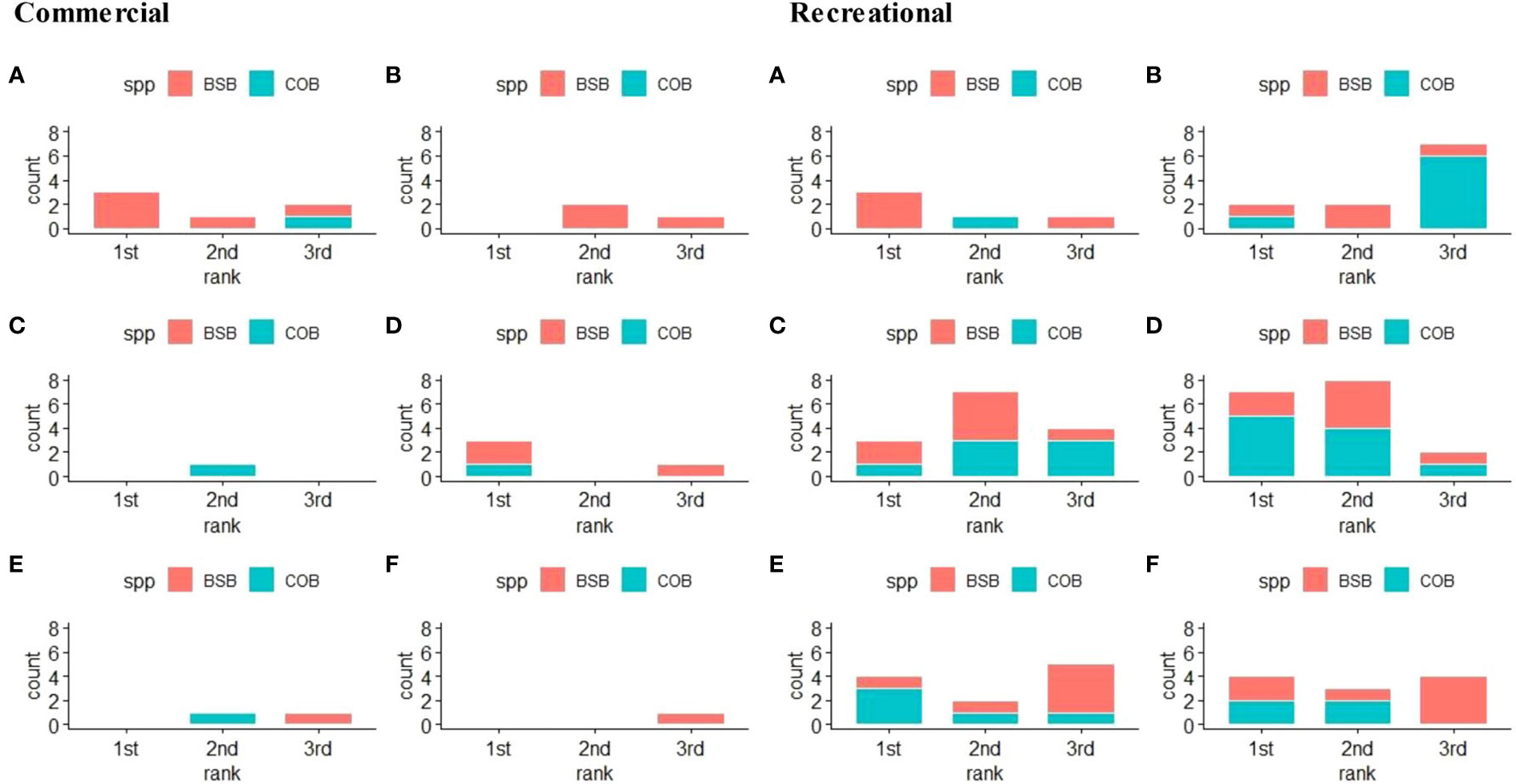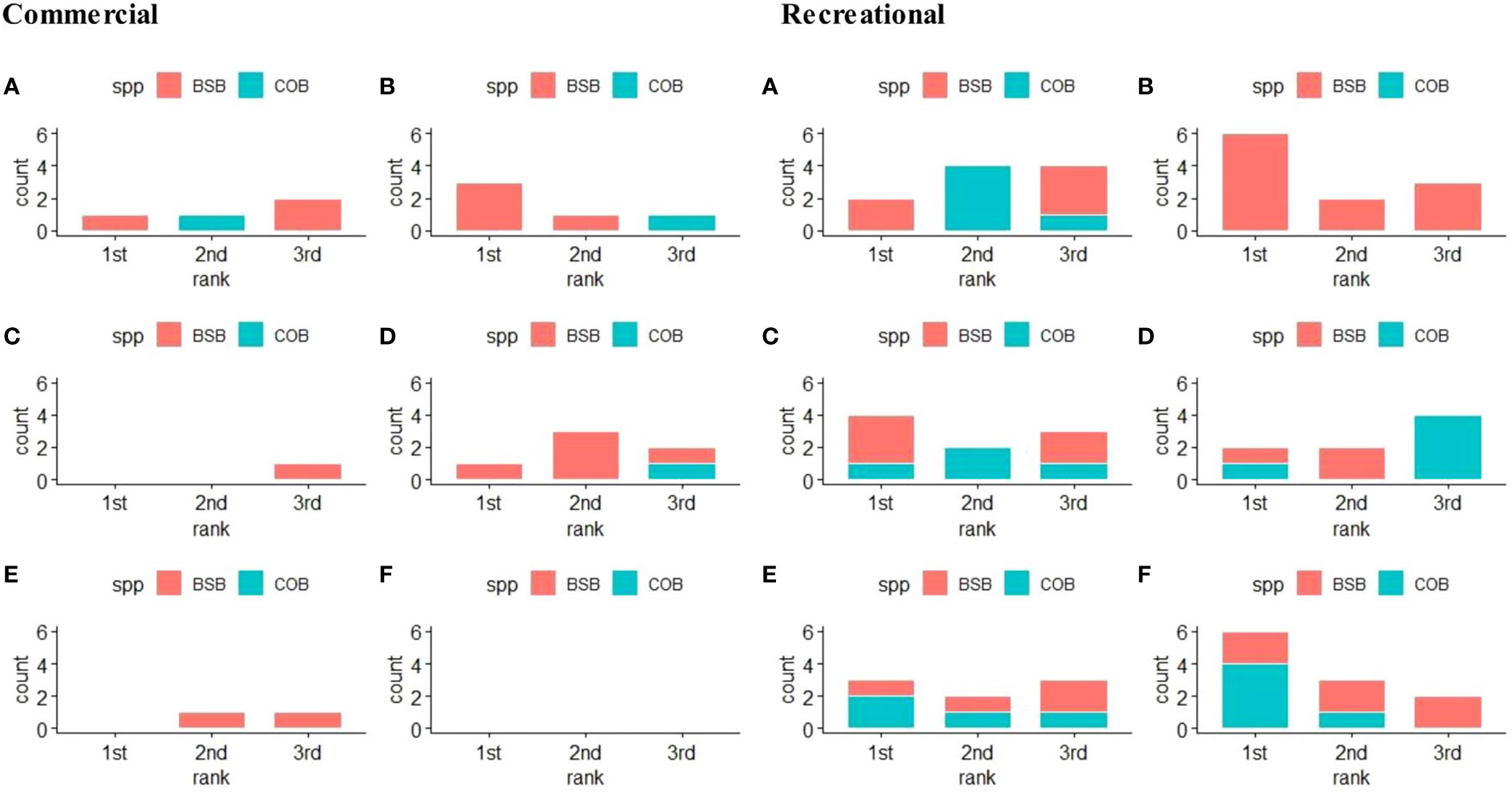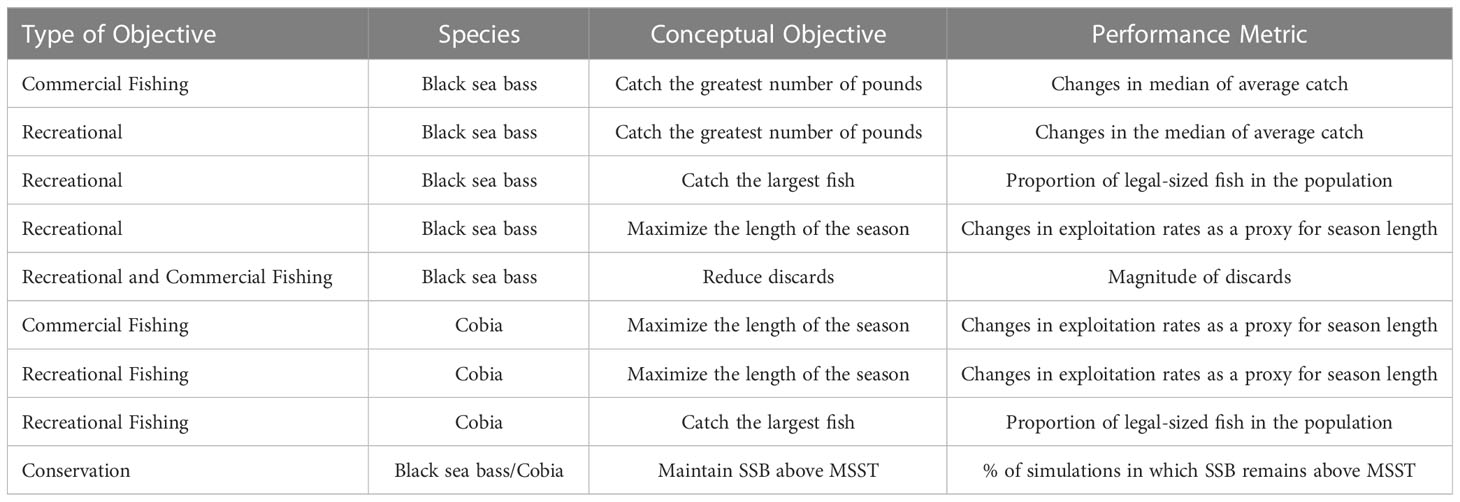Integrating information from semi-structured interviews into management strategy evaluation: A case study for Southeast United States marine fisheries
- 1Department of Applied Ecology, Center for Marine Sciences and Technology, North Carolina State University, Morehead City, NC, United States
- 2National Oceanic and Atmospheric Administration (NOAA) Beaufort Laboratory, Southeast Fisheries Science Center, Beaufort, NC, United States
- 3Duke University Marine Lab, Nicholas School of the Environment, Beaufort, NC, United States
by Damiano M, Wager B, Rocco A, Shertzer KW, Murray GD and Cao J (2022) Front. Mar. Sci. 9:1063260. doi: 10.3389/fmars.2022.1063260
Error in Figure
Table Legend
In the published article, there was an error in the legend for Figure 1 as published. Conceptual objectives group “F” was labeled “E”. The corrected legend appears below.

Figure 1 Tallied responses to Interview Question 2 which asks fishers to identify their top three conceptual objectives from a list provided by the interviewer. Conceptual objectives were ranked 1st, 2nd, or 3rd by commercial fishers (left) and recreational fishers (right) for black sea bass (red) and cobia (blue). Options for ranking were (A) “Catching the greatest number of pounds,” (B) “Catching the greatest number of fish,” (C) “Catching the largest size fish,” (D) “Maximizing the length of the season,” (E) “Conservation of the resource,” and (F) “Increased access or opportunity within the fishery.”.
In the published article, there was an error in the legend for Figure 2 as published. Preferred management measure group “F” was labeled “E”. The corrected legend appears below.

Figure 2 Tallied responses to Interview Question 3 which asks fishers to identify their top three management measures from a list provided by the interviewer. Management measures were ranked 1st, 2nd, or 3rd by commercial fishers (left) and recreational fishers (right) for black sea bass (red) and cobia (blue). Options for ranking were (A) “Changing the vessel/trip or bag limits,” (B) “Changing the size limits,” (C) “Changing the size limits to a slot limit,” (D) “Seasonal closures,” (E) “In-season adjustments to vessel/trip or bag limits,” and (F) “Changing catch limit allocation among sectors.”.
In the published article, there was an error in Table 3 as published. The performance metric referring to a proxy for season length reads “catch rates,” when it should be “exploitation rates”. The corrected Table 3 and its caption appear below.

Table 3 Conceptual objectives and performance metrics derived from participants’ responses to interview questions.
The authors apologize for these errors and state that this does not change the scientific conclusions of the article in any way. The original article has been updated.
Publisher’s note
All claims expressed in this article are solely those of the authors and do not necessarily represent those of their affiliated organizations, or those of the publisher, the editors and the reviewers. Any product that may be evaluated in this article, or claim that may be made by its manufacturer, is not guaranteed or endorsed by the publisher.
Keywords: marine resource management, fishers’ knowledge, management strategy evaluation, experiential knowledge, ecosystem approach management
Citation: Damiano M, Wager B, Rocco A, Shertzer KW, Murray GD and Cao J (2023) Corrigendum: Integrating information from semi-structured interviews into management strategy evaluation: a case study for Southeast United States marine fisheries. Front. Mar. Sci. 10:1205418. doi: 10.3389/fmars.2023.1205418
Received: 13 April 2023; Accepted: 24 April 2023;
Published: 16 May 2023.
Edited and Reviewed by:
Kate Brooks, Deakin University, AustraliaCopyright © 2023 Damiano, Wager, Rocco, Shertzer, Murray and Cao. This is an open-access article distributed under the terms of the Creative Commons Attribution License (CC BY). The use, distribution or reproduction in other forums is permitted, provided the original author(s) and the copyright owner(s) are credited and that the original publication in this journal is cited, in accordance with accepted academic practice. No use, distribution or reproduction is permitted which does not comply with these terms.
*Correspondence: Matthew Damiano, bWRkYW1pYW5AbmNzdS5lZHU=
†These authors have contributed equally to this work
 Matthew Damiano
Matthew Damiano Bethany Wager1†
Bethany Wager1† Kyle W. Shertzer
Kyle W. Shertzer Grant D. Murray
Grant D. Murray Jie Cao
Jie Cao